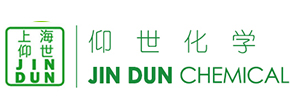118
How to Prevent Wrinkles and Creases in Fabric Dyeing with Anti-Wrinkle Agent
2023/4/23
Fabric dyeing is a process that involves immersing fabric in a dye solution and applying heat, pressure, and chemicals to achieve the desired color and effect. However, fabric dyeing also poses some challenges such as wrinkles and creases that can affect the quality and appearance of the final product.
Wrinkles and creases are caused by the friction between the fabric and the machinery equipment, as well as the uneven tension and shrinkage of the fabric during dyeing. Wrinkles and creases can result in uneven dyeing, poor color fastness, reduced strength, and lower customer satisfaction.
To solve this problem, anti-wrinkle agent (AWA) is usually added to the dye bath to prevent wrinkles and creases in fabric dyeing. AWA is a type of chemical auxiliary that can improve the lubricity, softness, smoothness, and leveling of the fabric in the dye bath. AWA can also reduce the metal ion residue, water hardness, and silicon scale that can interfere with the dyeing process.
There are different types of AWA for different types of fabrics, such as synthetic fibers, natural fibers, and blends. For example, Casofter-252 is a non-silicone oxygen bleach stabilizer that can prevent wrinkles and creases in synthetic fibers such as polyester, nylon, acrylic, and their blends. Casofter-252 is synthesized from oligomeric acrylic acid and magnesium salt, which can chelate metal ions that can catalyze the decomposition of hydrogen peroxide. Casofter-252 can also inhibit the decomposition of hydrogen peroxide, increase the whiteness of the fabric, and reduce the environmental impact of the dyeing process.
The dosage and application method of AWA depend on the type of fabric, dye, and equipment. Generally speaking, AWA is added to the dye bath at a concentration of 1-5 g/L, depending on the desired effect. AWA can be added directly to the dye bath or diluted with water before adding. AWA can also be combined with other auxiliaries such as dispersants, leveling agents, softeners, etc., to achieve better results.
The benefits of using AWA in fabric dyeing are manifold. AWA can prevent wrinkles and creases that can affect the quality and appearance of the fabric. AWA can also improve the dye uptake, color fastness, strength, and hand feel of the fabric. AWA can also reduce the environmental impact of the dyeing process by saving water, energy, and chemicals.
Wrinkles and creases are caused by the friction between the fabric and the machinery equipment, as well as the uneven tension and shrinkage of the fabric during dyeing. Wrinkles and creases can result in uneven dyeing, poor color fastness, reduced strength, and lower customer satisfaction.
To solve this problem, anti-wrinkle agent (AWA) is usually added to the dye bath to prevent wrinkles and creases in fabric dyeing. AWA is a type of chemical auxiliary that can improve the lubricity, softness, smoothness, and leveling of the fabric in the dye bath. AWA can also reduce the metal ion residue, water hardness, and silicon scale that can interfere with the dyeing process.
There are different types of AWA for different types of fabrics, such as synthetic fibers, natural fibers, and blends. For example, Casofter-252 is a non-silicone oxygen bleach stabilizer that can prevent wrinkles and creases in synthetic fibers such as polyester, nylon, acrylic, and their blends. Casofter-252 is synthesized from oligomeric acrylic acid and magnesium salt, which can chelate metal ions that can catalyze the decomposition of hydrogen peroxide. Casofter-252 can also inhibit the decomposition of hydrogen peroxide, increase the whiteness of the fabric, and reduce the environmental impact of the dyeing process.
The dosage and application method of AWA depend on the type of fabric, dye, and equipment. Generally speaking, AWA is added to the dye bath at a concentration of 1-5 g/L, depending on the desired effect. AWA can be added directly to the dye bath or diluted with water before adding. AWA can also be combined with other auxiliaries such as dispersants, leveling agents, softeners, etc., to achieve better results.
The benefits of using AWA in fabric dyeing are manifold. AWA can prevent wrinkles and creases that can affect the quality and appearance of the fabric. AWA can also improve the dye uptake, color fastness, strength, and hand feel of the fabric. AWA can also reduce the environmental impact of the dyeing process by saving water, energy, and chemicals.
Therefore, AWA is an indispensable auxiliary in fabric dyeing that can enhance the performance and value of the final product.
JD-208C-Anti-wrinkle agent in bath:JD-208C-Anti-wrinkle agent in bath Manufacturers, Suppliers, Factory – JIN DUN Chemical

